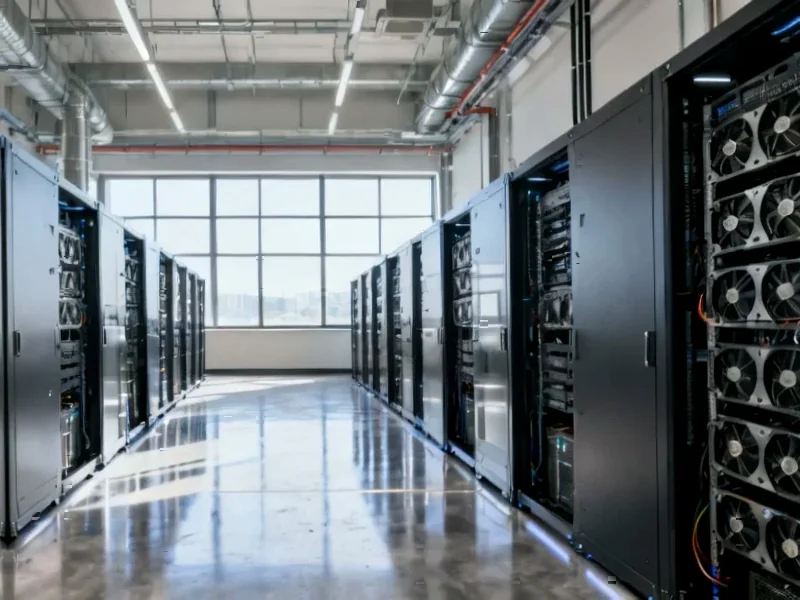According to PYMNTS.com, OpenAI has struck a massive $38 billion cloud computing deal with Amazon Web Services that will provide access to hundreds of thousands of Nvidia GPUs and potential expansion to tens of millions of CPUs for scaling agentic workloads. The companies announced in a Monday press release that OpenAI will immediately begin using AWS compute, plans to deploy all capacity by end of 2026, and can expand further in 2027 and beyond. This follows OpenAI’s August availability of its open weight foundation models on Amazon Bedrock, marking the first time its models became available outside Microsoft Azure. The deal comes despite OpenAI’s recent announcement that it’s purchasing another $250 billion worth of Microsoft Azure services while Microsoft loses its right of first refusal as OpenAI’s compute partner, despite maintaining a 27% stake worth approximately $135 billion in the restructured public benefit corporation.
The Technical Architecture Shift Behind Multi-Cloud AI
This partnership represents a fundamental architectural shift in how frontier AI models are trained and deployed. Running across multiple cloud providers requires sophisticated orchestration layers that can manage workloads across different infrastructure stacks, networking configurations, and storage systems. The technical challenge involves creating abstraction layers that can seamlessly distribute training jobs across AWS’s Nitro system and Azure’s proprietary infrastructure while maintaining data consistency, model synchronization, and performance optimization. This multi-cloud approach likely involves containerization at massive scale using Kubernetes clusters that can span cloud boundaries, with custom networking solutions to handle the petabyte-scale data transfers between training nodes.
The Compute Scaling Challenge for Agentic AI
The mention of scaling “agentic workloads” points to a critical technical challenge in next-generation AI systems. Agentic AI involves models that can plan, execute multi-step tasks, and operate autonomously over extended periods, requiring persistent state management and complex memory architectures. Unlike traditional inference workloads that process individual prompts, agentic systems maintain context across multiple interactions and external tool usage. This demands specialized compute infrastructure with low-latency interconnects between GPUs and fast access to distributed memory systems. AWS’s ability to provide “hundreds of thousands of Nvidia GPUs” suggests they’re building custom clusters optimized for these specific workload patterns, potentially using their P5 instances with NVIDIA H100 Tensor Core GPUs and second-generation Elastic Fabric Adapter for ultra-low latency networking.
Strategic Implications for the Cloud AI Market
OpenAI’s move to multi-cloud infrastructure represents a strategic masterstroke that could reshape the entire AI ecosystem. By diversifying beyond Microsoft Azure, OpenAI gains negotiating leverage, redundancy against potential service disruptions, and access to AWS’s massive enterprise customer base. This also prevents vendor lock-in that could limit future flexibility as model architectures evolve. For AWS, landing OpenAI represents a crucial victory in the cloud AI wars, demonstrating that even Microsoft’s closest AI partner needs additional infrastructure options. The timing is particularly significant given OpenAI’s recent restructuring into a public benefit corporation, which appears to have provided the flexibility to pursue this broader partnership strategy while maintaining its substantial Azure commitment.
The 2026 Implementation Timeline and Technical Reality
The 2026 deployment timeline for full capacity utilization suggests the enormous technical complexity involved in scaling this infrastructure. Deploying hundreds of thousands of GPUs requires solving non-trivial challenges in power distribution, cooling systems, and network topology. Each cloud provider has different rack designs, power delivery systems, and cooling methodologies that affect GPU performance and reliability. The migration likely involves extensive performance benchmarking to ensure models trained on one cloud platform can achieve similar results when inference happens on another. There are also significant data governance and compliance considerations when splitting AI workloads across multiple cloud environments, particularly for enterprise customers with strict data residency requirements.
The Future of AI Infrastructure Competition
This deal signals that the AI infrastructure market is entering a new phase of intense competition and specialization. We’re likely to see cloud providers developing increasingly differentiated offerings optimized for specific AI workload patterns—whether that’s massive-scale training, low-latency inference, or specialized agentic systems. The ability to provide “immediately available optimized compute” that AWS emphasizes will become a key differentiator as AI companies race to deploy increasingly complex models. This competition should drive innovation in custom silicon, networking technologies, and energy-efficient computing architectures. However, it also raises questions about standardization and interoperability as AI workloads become distributed across increasingly heterogeneous infrastructure environments.




